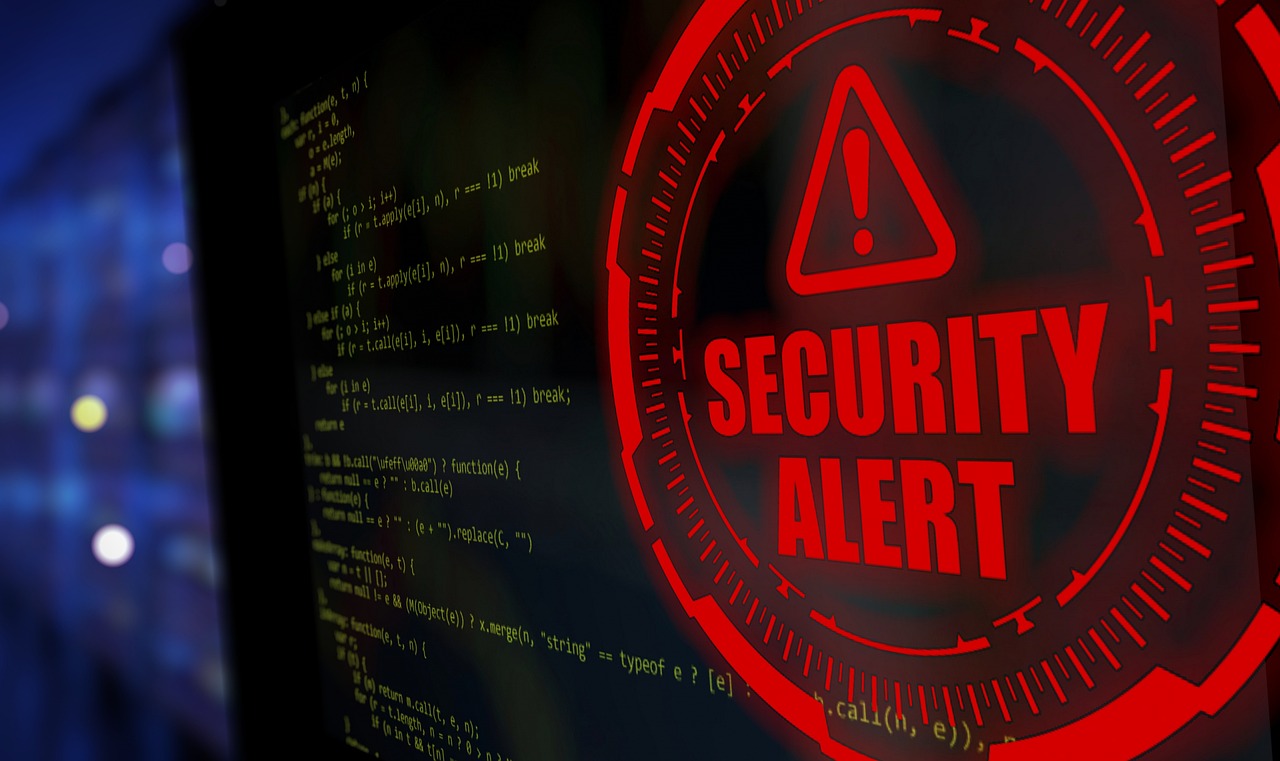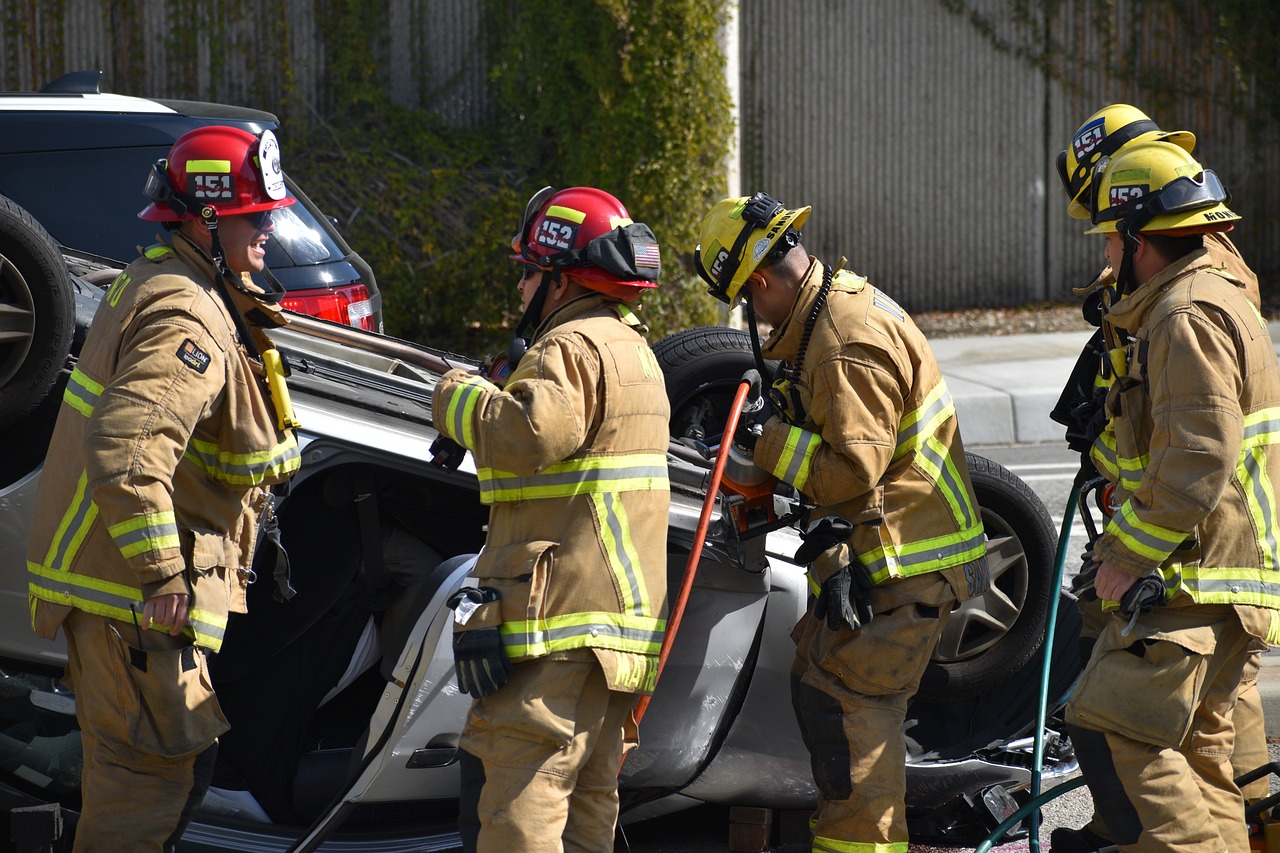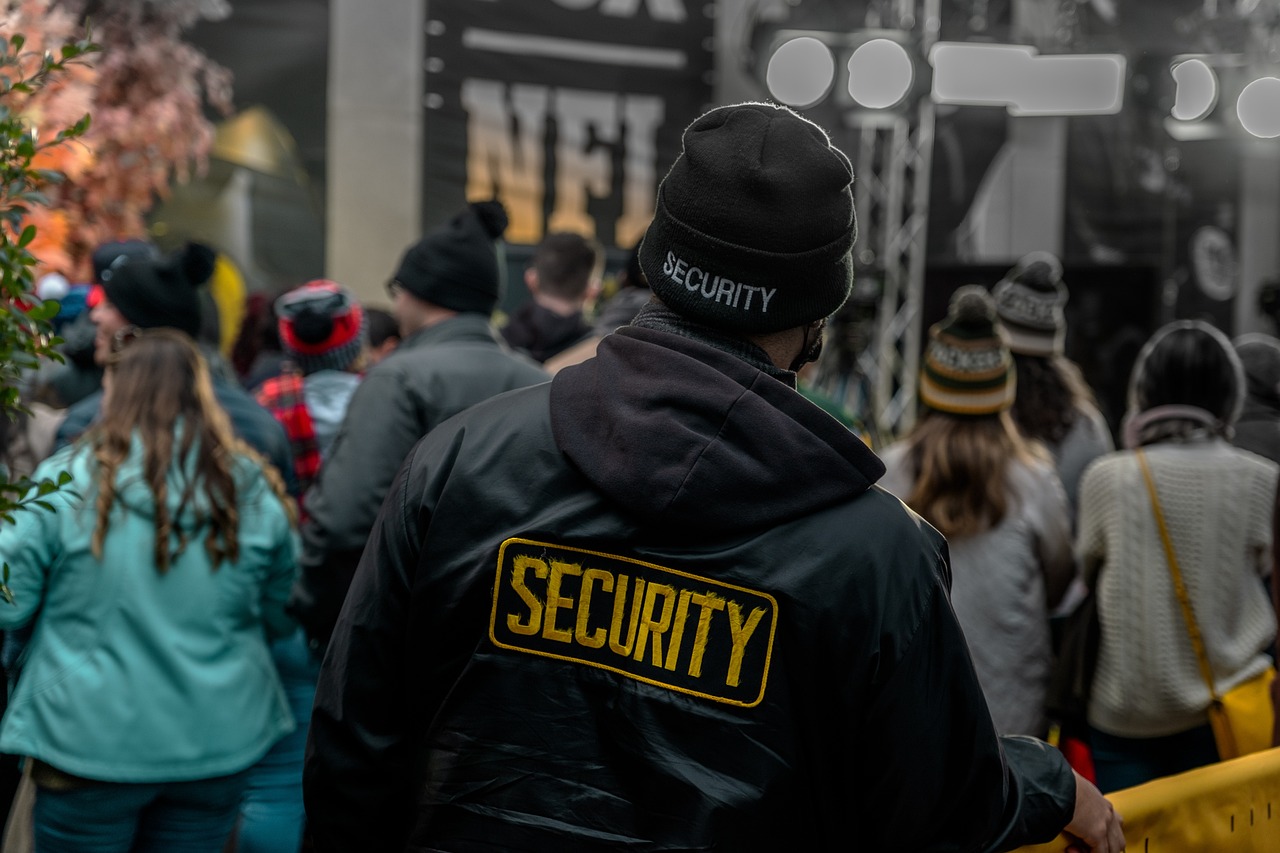Guide to Tech Gadgets for Emergency Preparedness
In today's unpredictable world, being prepared for emergencies is more important than ever. Whether it's a natural disaster, a power outage, or any unforeseen situation, having the right tech gadgets can make all the difference in keeping you safe and connected. Imagine being in a situation where your phone is dead, the lights are out, and you have no way to reach your loved ones. Sounds terrifying, right? But fear not! This guide will walk you through essential tech gadgets that not only enhance your emergency preparedness but also ensure you navigate challenges effectively. From communication tools to survival gear, we’ve got you covered!
So, what exactly should you have in your emergency toolkit? Well, it’s all about the right combination of technology that can keep you informed, safe, and ready to act. Think of it as assembling your own superhero squad—each gadget plays a vital role in your overall safety strategy. Let's dive into the world of tech gadgets that can transform your emergency preparedness from basic to brilliant.
Effective communication is vital during emergencies. Imagine being stranded without a way to reach out for help or to check on your loved ones. This is where essential communication gadgets come into play. Devices like satellite phones or two-way radios can keep you connected even when traditional networks fail. These gadgets are not just luxury items; they are lifelines that can make a significant difference in critical situations.
Moreover, consider investing in apps that can send emergency alerts or share your location with friends and family. In a world where connectivity is often taken for granted, having backup communication tools can provide peace of mind in the most chaotic moments.
Power outages can occur during emergencies, leaving you in the dark—literally and figuratively. That's why portable chargers and solar power options are essential. Imagine being in a blackout with no way to charge your phone or other critical devices. Portable power banks can keep your devices operational when you need them most. They’re compact, easy to carry, and can be a lifesaver when the grid goes down.
Solar chargers take it a step further, allowing you to harness the sun’s energy to keep your gadgets powered up. They are particularly useful in prolonged emergencies where access to electricity is limited. Having a reliable power source can mean the difference between staying informed and being left in the dark.
Proper lighting is crucial in crisis situations. When the lights go out, having the right lighting gadgets can help illuminate your surroundings and keep you safe. Innovative lighting solutions such as solar lanterns and rechargeable flashlights are perfect for emergencies. They are not only energy-efficient but also provide bright, long-lasting illumination.
Imagine stumbling around in the dark, trying to find a flashlight that’s out of batteries. Frustrating, right? With rechargeable options, you can ensure that your lighting devices are always ready for action. Plus, many of these gadgets are portable and lightweight, making them easy to store and carry.
In this digital age, smartphone apps can provide real-time information during emergencies. From weather updates to navigation assistance, the right survival apps can keep you informed and prepared. For instance, apps that provide emergency contacts, location tracking, and even first-aid tips can be invaluable during a crisis.
Think of these apps as your personal emergency assistant, always ready to guide you through the chaos. With just a few taps, you can access critical information that could help you make informed decisions when it matters most.
First aid is a critical aspect of emergency preparedness. Having tech gadgets that assist in medical emergencies can be a game-changer. From smart bandages that monitor wounds to digital health monitors that track vital signs, these gadgets can provide immediate assistance until professional help arrives.
Imagine being able to assess your injury with a smart device that gives you real-time feedback. It’s like having a mini doctor in your pocket! These advancements in first aid technology can enhance your ability to respond effectively in medical emergencies.
Access to clean water is vital in emergencies. Advanced water filtration gadgets can ensure safe drinking water in challenging conditions. Imagine being in a situation where clean water is scarce—having a portable water filter can be a lifesaver. These devices remove contaminants and make water safe to drink, giving you peace of mind when resources are limited.
Whether you’re camping, hiking, or facing a natural disaster, investing in a reliable water filtration system is essential for your emergency preparedness toolkit.
Multi-tools can be lifesavers in emergencies. They combine functionality with portability, allowing you to carry several tools in one compact device. From can openers to screwdrivers, these gadgets are versatile and can be used in a variety of survival scenarios.
Consider them your Swiss Army knife for emergencies—ready to tackle whatever challenges come your way. Having a multi-tool can simplify tasks and help you stay organized when every second counts.
Staying informed about weather conditions is essential. Gadgets that provide real-time weather updates and alerts can help you prepare for natural disasters. Imagine being able to receive notifications about severe weather in your area; this information can be crucial for making timely decisions.
Weather monitoring devices come in various forms, from handheld devices to smartphone apps. They can help you stay ahead of the storm, ensuring you have the necessary time to prepare and protect yourself and your loved ones.
A secure home provides peace of mind during emergencies. Smart home security systems can protect your property and alert you to potential threats. Imagine being away from home during a crisis and receiving real-time alerts about suspicious activity. These systems can provide you with valuable information and help you take action if needed.
Investing in a comprehensive home security system can enhance your overall safety and provide you with the confidence that your home is protected, even when you’re not there.
Q: What are the essential tech gadgets for emergency preparedness?
A: Essential gadgets include communication tools, portable power sources, emergency lighting, survival apps, first aid tech, water filtration systems, multi-tools, weather monitoring devices, and home security systems.
Q: How can I ensure my devices stay charged during an emergency?
A: Invest in portable chargers and solar power options to keep your devices operational. Make sure to charge them regularly and consider having backup batteries.
Q: Are there specific apps I should download for emergencies?
A: Yes! Look for apps that provide weather updates, emergency contacts, navigation assistance, and first aid tips to help you stay informed during a crisis.
Q: How do I choose a reliable water filtration system?
A: Look for portable water filters that are easy to use, effective in removing contaminants, and have good reviews from users. Consider the size and weight for portability.
Q: What should I include in my emergency kit?
A: Your emergency kit should include communication tools, power sources, lighting, first aid supplies, water filtration, multi-tools, and any personal items you may need.

Essential Communication Tools
When the unexpected strikes, whether it’s a natural disaster or an unforeseen emergency, staying connected becomes a matter of survival. In these critical moments, having the right communication tools can make all the difference. Imagine being cut off from your loved ones or emergency services when you need them the most. It’s a chilling thought, right? That's why investing in essential communication gadgets is not just a good idea; it’s a necessity.
First and foremost, consider a reliable satellite phone. Unlike traditional cell phones that rely on local towers, satellite phones connect directly to satellites orbiting the Earth. This means you can make calls from virtually anywhere, even in remote areas where cell service is non-existent. It’s like having a lifeline that reaches beyond the limitations of conventional networks. Brands like Iridium and Inmarsat offer devices that are rugged, portable, and designed for extreme conditions.
Next up on our communication arsenal is a two-way radio. These handy gadgets are perfect for short-range communication, especially when you’re in a group or need to coordinate with family members during an emergency. They operate on specific frequencies and don’t depend on cellular networks, which can be a lifesaver when those networks are down. You can find models with impressive ranges, and many come equipped with features like weather alerts and emergency channels, ensuring you’re always in the loop.
Don’t forget about emergency radios, which are designed to give you access to crucial updates during a crisis. Many modern emergency radios include NOAA weather band reception, allowing you to receive real-time weather alerts and updates. Some even come with hand-crank or solar-powered options, ensuring you can keep them operational without electricity. Having one of these in your emergency kit is like having a news anchor right in your living room, providing you with essential information when you need it the most.
For those who are tech-savvy, there are also smartphone apps dedicated to emergency communication. Apps like Zello turn your smartphone into a walkie-talkie, enabling instant communication with friends and family, even if traditional networks are down. Other apps provide critical information, such as emergency contacts, local emergency services, and even location tracking. It’s like having a personal assistant that knows exactly what to do in a crisis!
To sum it all up, a combination of satellite phones, two-way radios, emergency radios, and smartphone apps can significantly enhance your communication capabilities during emergencies. Each tool has its unique advantages, and together, they create a robust communication network that can keep you connected when it matters most. So, whether you’re hunkering down at home or venturing into the wilderness, make sure you’re equipped with these essential gadgets. After all, being prepared is the first step towards ensuring your safety and that of your loved ones.
- What is the best satellite phone for emergencies?
Iridium and Inmarsat are top choices due to their global coverage and reliability. - Can I use a two-way radio without a license?
It depends on the frequency. Some frequencies require a license, while others, like FRS, do not. - How do emergency radios work?
They tune into NOAA weather bands to provide real-time alerts and updates during emergencies. - Are smartphone emergency apps effective?
Yes, they can be very effective, especially if you have a backup power source for your phone.

Portable Power Sources
When disaster strikes, the last thing you want is to be left in the dark—literally. Imagine a storm knocking out power, and you’re left fumbling in the dark, unable to charge your phone or keep your emergency radio operational. This is where come into play, acting as your lifeline during unforeseen circumstances. From portable chargers to solar-powered options, these gadgets ensure that your devices remain functional when you need them the most.
First up, let's talk about portable chargers. These compact power banks are a must-have for anyone looking to stay connected during an emergency. They come in various capacities, allowing you to choose one that suits your needs. For instance, a 10,000mAh power bank can charge a smartphone up to three times, which can be a game-changer when communication is critical. Some even come with multiple USB ports, enabling you to charge several devices simultaneously. Just imagine being able to keep your phone, flashlight, and even a small tablet charged while everyone else is struggling with dead batteries!
But what if you find yourself in a situation where you can't recharge your portable charger? This is where solar power sources shine—literally! Solar chargers harness the power of the sun to recharge themselves, making them perfect for long-term emergencies. They are particularly useful for camping or outdoor adventures, but their ability to provide a renewable source of energy makes them invaluable during prolonged power outages. Many solar chargers are lightweight and foldable, so you can easily pack them away until you need them. Just think of them as your personal sun-powered energy stations!
Now, let’s not forget about solar generators. These beasts can power more than just your phone; they can run small appliances, lights, and even medical devices. Equipped with larger batteries and solar panels, they can store energy for when the sun isn’t shining. Imagine having the ability to brew your morning coffee or keep your refrigerator running during a blackout. That’s the kind of comfort that portable power sources can provide in dire situations.
To help you choose the best portable power source for your needs, here's a quick comparison table:
| Type | Capacity | Features | Best For |
|---|---|---|---|
| Portable Charger | 5,000 - 20,000 mAh | Multiple USB ports, compact design | Smartphones, tablets |
| Solar Charger | 10,000 - 30,000 mAh | Lightweight, foldable, eco-friendly | Camping, outdoor activities |
| Solar Generator | 300 - 3,000 Wh | Multiple output options, rechargeable | Home appliances, medical devices |
In summary, portable power sources are not just gadgets; they are essential tools for survival during emergencies. Whether you opt for a simple power bank or invest in a solar generator, being prepared with these devices can make all the difference when the unexpected happens. So, ask yourself: are you ready to power through the next crisis?
Q: How do I choose the right portable power source for my needs?
A: Consider the devices you need to charge, the duration of potential power outages, and whether you’ll have access to sunlight for solar options.
Q: Can I use a solar charger on cloudy days?
A: Yes, solar chargers can still generate some power on cloudy days, but their efficiency will be reduced compared to direct sunlight.
Q: How long does it take to charge a portable charger?
A: Charging times vary by capacity and brand, but most portable chargers take between 4 to 8 hours to fully recharge.

Emergency Lighting Solutions
When the lights go out, it can feel like the world has come to a standstill. Power outages are not just inconvenient; they can be downright dangerous. That's where come into play. Imagine being in your living room during a storm, and suddenly, everything goes dark. The right lighting gadgets can turn that panic into a manageable situation. They not only illuminate your path but also provide a sense of safety and security.
One of the most popular options for emergency lighting is the solar lantern. These handy devices charge using sunlight during the day, ensuring that you have light when you need it most. They are portable, eco-friendly, and can last for hours on a single charge. Plus, many modern solar lanterns come equipped with USB ports, allowing you to charge your devices in a pinch. It’s like having a mini power station right in your bag!
Another excellent choice is the rechargeable flashlight. Unlike traditional flashlights that require batteries, these gadgets can be recharged via USB, making them both cost-effective and environmentally friendly. Some models even offer multiple brightness settings and strobe features for signaling for help. Imagine being able to adjust the brightness based on your needs—whether you're searching for something in the dark or trying to signal for assistance.
For those who prefer a more permanent solution, consider installing LED emergency lights in your home. These lights can be hardwired into your electrical system and will automatically turn on during a power outage. They can be a lifesaver in critical situations, providing immediate illumination without any effort on your part. Think of them as your home's personal guardian, ready to shine a light when it matters most.
But what if you're not at home when an emergency strikes? This is where smart lighting systems come into play. Many smart home devices can be programmed to turn on during specific times or in response to certain triggers, such as a power outage. You can control these lights remotely through your smartphone, giving you peace of mind no matter where you are. It’s like having a light switch in your pocket!
In terms of practicality, you might want to consider a combination of these lighting solutions. For instance, having a few solar lanterns for outdoor use, rechargeable flashlights for personal safety, and LED emergency lights installed in key areas of your home can create a comprehensive lighting strategy. This multi-faceted approach ensures that you are prepared for any scenario.
In conclusion, investing in reliable emergency lighting solutions can make a world of difference when the unexpected occurs. Whether you opt for portable options like solar lanterns and rechargeable flashlights, or more permanent fixtures like LED emergency lights, having the right tools at your disposal can transform a chaotic situation into a manageable one. Don’t wait for the lights to go out—be proactive and illuminate your path to safety!
- What type of emergency lighting is best for home use?
LED emergency lights and solar lanterns are often recommended for home use due to their efficiency and long-lasting power.
- How long do solar lanterns last on a full charge?
Most solar lanterns can last anywhere from 6 to 12 hours on a full charge, depending on the model and brightness settings.
- Are rechargeable flashlights worth the investment?
Absolutely! They save you money on batteries and are more environmentally friendly, plus they often have better light output compared to standard flashlights.

Survival Apps and Software
In today's digital age, having the right survival apps on your smartphone can be a game-changer during emergencies. Think of these apps as your personal lifelines, providing you with crucial information and tools at your fingertips. Whether it's a natural disaster, power outage, or any unforeseen situation, these applications can help you navigate challenges effectively. Imagine being caught in a storm, and with just a few taps on your screen, you can access real-time weather updates, emergency contacts, and even navigation assistance to get you to safety. Sounds like a superhero power, right?
One of the most essential categories of survival apps includes weather monitoring applications. These apps provide alerts about severe weather conditions, keeping you informed and prepared. For instance, apps like Weather Underground or AccuWeather not only give you forecasts but also send push notifications about severe weather warnings in your area. This can be the difference between staying safe indoors and being caught outside during a dangerous storm.
Another critical aspect of emergency preparedness is having access to emergency contact information. Many survival apps allow you to store vital contacts, including family members, friends, and local emergency services. Imagine the chaos of an emergency situation—having all your essential contacts organized and easily accessible can save precious time. Some apps even allow you to send automatic alerts to your loved ones if you find yourself in distress, ensuring that help is on the way even if you can't make a call.
Navigation is yet another area where survival apps shine. Applications like Google Maps or Waze can provide you with real-time traffic updates and alternative routes, which can be invaluable during evacuations or when trying to avoid hazardous areas. In a pinch, these apps can guide you to the nearest shelter or safe location, making sure you find your way quickly and efficiently.
Additionally, there are apps designed specifically for first aid and medical emergencies. The American Red Cross offers an app that not only provides first aid instructions but also allows you to create an emergency kit checklist. This feature is especially handy because it helps you prepare in advance, ensuring that you have all the necessary supplies when you need them most. You wouldn't want to be fumbling around during a crisis, right?
To give you a clearer picture, here’s a quick comparison table of some popular survival apps:
| App Name | Features | Platform |
|---|---|---|
| Weather Underground | Real-time weather updates, severe weather alerts | iOS, Android |
| American Red Cross | First aid instructions, emergency kit checklist | iOS, Android |
| Google Maps | Navigation, traffic updates | iOS, Android |
| Waze | Community-driven traffic alerts, navigation | iOS, Android |
In conclusion, survival apps and software are essential tools that can enhance your emergency preparedness. They not only keep you informed but also empower you to take action when it matters most. By leveraging technology, you can ensure that you and your loved ones are better equipped to handle any crisis that comes your way. So, what's stopping you? Download a few of these apps today and take the first step towards becoming a tech-savvy survivor!
Q: What are survival apps?
A: Survival apps are mobile applications designed to provide critical information and tools during emergencies, including weather updates, emergency contacts, and navigation assistance.
Q: Are these apps free to download?
A: Many survival apps are free, while some may offer premium features for a fee. It's always a good idea to check the app store for pricing details.
Q: Can I use these apps without an internet connection?
A: Some features of survival apps may require an internet connection, but many apps allow you to download maps and information for offline use.
Q: How can I ensure my smartphone is ready for emergencies?
A: Make sure to keep your smartphone charged, download essential survival apps, and store emergency contacts in an easily accessible format.

First Aid Tech Gadgets
When it comes to emergency preparedness, having the right can make a world of difference. Imagine being in a situation where every second counts, and you have a gadget that can help you assess injuries or even provide immediate care. It’s like having a mini hospital right in your pocket! From smart bandages that monitor wounds to digital health monitors that keep track of vital signs, these gadgets are designed to enhance your first aid capabilities significantly.
Let’s dive into some of the most innovative first aid tech gadgets that you should consider adding to your emergency kit:
- Smart Bandages: These high-tech bandages are equipped with sensors that can detect infection, monitor healing, and even send alerts to your smartphone. They take the guesswork out of wound care, allowing you to focus on what really matters—getting better!
- Digital Thermometers: Forget the old mercury thermometers; digital ones provide quick and accurate readings, often with features like fever alerts. Some even connect to your smartphone, allowing you to track temperature changes over time.
- Portable Defibrillators: Having an Automated External Defibrillator (AED) on hand can be a lifesaver in cardiac emergencies. Modern AEDs are designed to be user-friendly, with voice prompts that guide you through the process of administering life-saving shocks.
- Health Monitoring Devices: Wearable devices that monitor heart rate, blood oxygen levels, and other vital signs can provide crucial information during emergencies. They can alert you if something is amiss, allowing for timely intervention.
But it’s not just about the gadgets themselves; knowing how to use them effectively is equally important. Many of these devices come with user-friendly apps that offer tutorials and step-by-step instructions. For instance, if you’re using a smart bandage, the accompanying app might provide real-time updates on the status of the wound, helping you make informed decisions about your care.
In addition, some first aid tech gadgets also incorporate features that allow you to share your health data with medical professionals. This can be invaluable in emergencies, as it provides doctors with immediate access to your medical history and current condition, enabling them to deliver better care. Think of it as having a personal health assistant who’s always ready to provide information when you need it most.
As you consider your emergency preparedness strategy, don’t overlook the importance of these tech gadgets. They can provide not only peace of mind but also the tools you need to respond effectively in a crisis. Investing in first aid tech gadgets is like equipping yourself with a safety net—one that can catch you when life throws unexpected challenges your way.
In conclusion, integrating first aid tech gadgets into your emergency kit is a smart choice. They enhance your ability to respond to medical emergencies, keeping you and your loved ones safer. Remember, the goal is to be prepared, not scared. With the right tools at your disposal, you can face any challenge head-on!
Q: What are smart bandages, and how do they work?
A: Smart bandages are advanced dressings that contain sensors to monitor the condition of a wound. They can detect signs of infection and send alerts to your smartphone, ensuring you can take action promptly.
Q: Are portable defibrillators easy to use?
A: Yes! Modern portable defibrillators are designed with user-friendliness in mind. They provide clear voice instructions and visual prompts to guide you through the process of delivering shocks if necessary.
Q: How can wearable health monitoring devices help in emergencies?
A: Wearable devices can track vital signs such as heart rate and blood oxygen levels. In an emergency, they can alert you to any abnormalities, allowing for quick medical intervention.
Q: Do I need any special training to use these gadgets?
A: While many first aid tech gadgets are designed to be intuitive, it’s always a good idea to familiarize yourself with their use. Consider taking a first aid course that covers the use of these devices for added confidence.

Emergency Water Filtration Systems
When it comes to emergency preparedness, access to clean water is not just a luxury; it’s a necessity. Imagine being caught in a natural disaster without a reliable source of drinking water. It’s a nightmare scenario, right? This is where come into play. These gadgets are designed to transform contaminated water into safe drinking water, ensuring you and your loved ones stay hydrated and healthy during crises.
There are various types of water filtration systems available, each with its unique features and benefits. For instance, some are compact and portable, making them perfect for on-the-go situations, while others are designed for home use, capable of filtering larger quantities of water. Portable water filters are particularly popular among outdoor enthusiasts and emergency preppers alike, as they can easily fit into a backpack and are lightweight, yet effective.
Let’s take a closer look at some of the most effective emergency water filtration systems:
| Type of Filter | Filtration Method | Capacity | Best For |
|---|---|---|---|
| Portable Water Filter | Activated Carbon | Up to 1000 liters | Hiking, Camping |
| Gravity Water Filter | Multi-stage Filtration | Up to 5000 liters | Group Use, Home |
| UV Water Purifier | Ultraviolet Light | 1 liter per minute | Travel, Emergency Kits |
Choosing the right water filtration system depends on your specific needs. For instance, if you’re planning a camping trip, a portable water filter may be your best bet, while a gravity water filter could be ideal for family use at home during an emergency. Additionally, consider the filtration method—some systems use activated carbon, while others utilize UV light to kill harmful pathogens. Understanding these differences can help you make an informed decision.
Moreover, it’s essential to regularly test your filtration system to ensure it’s functioning correctly. Just like you wouldn’t drive a car without checking the oil, you shouldn’t rely on a water filter without verifying it’s in good condition. This means replacing filters as recommended by the manufacturer and ensuring that your system is free from any damage.
In conclusion, investing in a reliable emergency water filtration system is an essential step in your preparedness plan. It can mean the difference between staying healthy or falling ill during a crisis. So, whether you’re at home or on the go, having a dependable way to access clean water will provide you with peace of mind, allowing you to focus on what truly matters—keeping yourself and your loved ones safe.
1. How do I know which water filtration system is best for me?
Consider your specific needs, such as the number of people you need to filter water for, the types of emergencies you might face, and how portable you need the system to be.
2. How often should I replace the filters in my water filtration system?
It depends on the type of system you have. Always refer to the manufacturer’s guidelines for specific recommendations. Regular maintenance is crucial for optimal performance.
3. Can I use water from any source with my filtration system?
Most systems can handle water from lakes, rivers, and even tap water, but always check the specifications of your filter to ensure it can handle the contaminants present in your water source.

Multi-Tools and Survival Gear
When it comes to emergency preparedness, having the right tools at your disposal can make all the difference. Multi-tools and survival gear are essential companions that can help you navigate through various challenges. Think of them as your Swiss Army knife for survival—compact, versatile, and indispensable. Imagine being in a situation where you need to cut a rope, open a can, or even perform minor repairs. Wouldn't it be reassuring to have a gadget that can do all that and more? That's where multi-tools shine!
Today's multi-tools are not just simple gadgets; they come loaded with features that cater to a variety of needs. From pliers and screwdrivers to bottle openers and knives, these tools can be a lifesaver. For instance, consider a multi-tool that includes a built-in flashlight and a fire starter. Having these features in one compact device means you can save space in your emergency kit while ensuring you're prepared for whatever comes your way.
Moreover, survival gear has evolved significantly over the years. No longer are we limited to bulky backpacks filled with basic supplies. Now, we have access to high-tech gear that combines functionality with portability. For example, some survival kits now include solar-powered chargers, compact water filters, and even portable cooking systems. These innovations not only make survival easier but also increase your chances of staying safe and healthy during an emergency.
When selecting multi-tools and survival gear, it's important to consider the following factors:
- Durability: Look for materials that can withstand tough conditions.
- Weight: Opt for lightweight options that are easy to carry.
- Functionality: Choose tools that serve multiple purposes.
- Ease of Use: Ensure that the tools are user-friendly, especially in high-stress situations.
To help you make an informed decision, here’s a quick comparison of some popular multi-tools available in the market:
| Multi-Tool Name | Weight | Features | Price |
|---|---|---|---|
| Leatherman Wave+ | 8.5 oz | 17 tools including pliers, knives, and screwdrivers | $99.95 |
| Gerber Suspension | 9.6 oz | 12 tools with a built-in safety lock | $44.95 |
| Victorinox Swiss Army | 7.1 oz | 15 functions including scissors and can opener | $49.99 |
In conclusion, investing in quality multi-tools and survival gear is not just about being prepared; it's about empowering yourself to handle emergencies with confidence. These tools can serve as your lifeline, providing you with the necessary resources to tackle unforeseen challenges. So, whether you're hiking in the woods, preparing for a natural disaster, or just want to be ready for anything, make sure you have the right multi-tools and survival gear in your arsenal.

Weather Monitoring Devices
When it comes to emergency preparedness, staying informed about the weather is crucial. Imagine you're planning a weekend getaway, and suddenly, the skies turn dark and ominous. Without the right , you might find yourself unprepared for a storm that rolls in faster than a freight train. These gadgets are designed to provide real-time updates and alerts, ensuring you have the information you need to make informed decisions during critical situations.
One of the most popular tools in this category is the personal weather station. These devices can track various weather parameters, including temperature, humidity, wind speed, and atmospheric pressure. By having a personal weather station at home, you can access precise data tailored to your specific location. Many models now come equipped with smartphone connectivity, allowing you to receive updates directly on your device. This feature is invaluable when you're out and about, as it helps you stay ahead of changing conditions.
Another excellent option is a weather alert radio. These radios are designed to receive emergency weather alerts directly from the National Oceanic and Atmospheric Administration (NOAA). They can provide timely notifications about severe weather events such as tornadoes, hurricanes, and flash floods. What’s even better is that many of these radios are battery-operated or have hand-crank options, ensuring they remain functional even during power outages. Imagine being able to listen to critical updates when the power is out—this could make all the difference in an emergency.
For those who prefer a more high-tech approach, there are also smart weather apps available for smartphones. These apps not only provide forecasts but also offer real-time alerts based on your location. Some of the top-rated apps even include radar maps, allowing you to visualize incoming storms. By leveraging these technologies, you can make quick decisions about evacuation or preparation, depending on the weather forecast.
To give you a clearer picture, here’s a quick comparison of some popular weather monitoring devices:
| Device | Features | Best For |
|---|---|---|
| Personal Weather Station | Tracks temperature, humidity, wind speed, pressure; smartphone connectivity | Home use; detailed local weather data |
| Weather Alert Radio | Receives NOAA alerts; battery-operated; hand-crank option | Emergency situations; power outages |
| Smart Weather Apps | Real-time alerts; radar maps; forecasts | On-the-go updates; convenience |
In addition to these devices, consider investing in a portable weather sensor. These handy gadgets can be taken anywhere and provide instant feedback on weather conditions. Whether you're hiking in the mountains or camping by a lake, having a portable weather sensor can help you avoid unexpected weather events that could ruin your plans or put you in danger.
Ultimately, the right weather monitoring devices can empower you to make informed decisions during emergencies. They act as your eyes and ears, providing crucial information that can help you stay safe and prepared. So, as you gear up for your emergency preparedness plan, don’t overlook the importance of having reliable weather monitoring tools at your disposal.
Q: What is the best weather monitoring device for home use?
A: A personal weather station is often the best choice for home use, as it provides detailed local weather data and can be connected to your smartphone for real-time updates.
Q: How do weather alert radios work?
A: Weather alert radios receive broadcasts from NOAA, providing alerts for severe weather conditions. Many models have battery backups to ensure they remain operational during power outages.
Q: Can I rely solely on smartphone apps for weather updates?
A: While smartphone apps are convenient and provide real-time updates, it's wise to have a backup device, such as a weather alert radio, especially during emergencies when power or cellular networks may be down.

Home Security Systems
In times of crisis, feeling secure in your own home is paramount. Home security systems have evolved significantly, integrating cutting-edge technology that not only protects your property but also provides you with peace of mind. Imagine being able to monitor your home from anywhere in the world, receiving instant alerts about any suspicious activity, and having the ability to communicate with emergency services at the touch of a button. Sounds like something out of a sci-fi movie, right? Well, it's very much a reality today!
Modern home security systems offer a variety of features that can be tailored to your needs. From smart cameras that allow you to check in on your home via your smartphone to motion detectors that send alerts when they sense movement, these gadgets are designed to keep you informed and safe. One of the most appealing aspects of these systems is their remote monitoring capabilities. With just a few taps on your smartphone, you can view live feeds from your cameras, check the status of your security system, and even unlock doors for trusted visitors.
Furthermore, many of these systems come equipped with smart home integration. This means they can communicate with other devices in your home, such as smart lights and thermostats. Imagine a scenario where a security breach is detected: your lights could flash, alerting you and scaring off intruders, while simultaneously notifying local authorities. This level of automation not only enhances security but also simplifies your life.
Let’s not forget about the importance of a robust alarm system. A loud alarm can deter potential intruders and alert you and your neighbors to a possible threat. Many systems now offer customizable alarm settings, allowing you to choose when and how to activate them. For example, you might want to set your alarms to a lower sensitivity during the day when you’re home but increase it at night when you’re asleep.
When considering which security system to invest in, it’s crucial to assess your specific needs. Factors such as the size of your home, the number of entry points, and your budget will all play a role in your decision. To help you navigate through the options, here’s a quick comparison of popular home security systems:
| System | Features | Price Range |
|---|---|---|
| Ring | Video doorbell, motion detection, smart home integration | $199 - $499 |
| ADT | 24/7 monitoring, smart home devices, customizable plans | $28 - $60/month |
| SimpliSafe | No contract, easy setup, mobile alerts | $229 - $489 |
As you can see, there are various options available, each with its unique features and price points. Investing in a home security system is not just about protecting your belongings; it's about safeguarding your peace of mind. In an emergency, knowing that your home is secure allows you to focus on what truly matters: the safety of your loved ones.
To wrap it up, a comprehensive home security system can be your first line of defense against unforeseen threats. By leveraging technology, you can ensure that you and your family remain safe, even in the most challenging situations. So, take the plunge, explore your options, and choose a system that fits your lifestyle and needs.
- What is the best home security system for my needs? It depends on your specific requirements, such as the size of your home and your budget. Consider features like remote monitoring, alarm systems, and smart home integration.
- Are home security systems easy to install? Many modern systems are designed for DIY installation, making them user-friendly. However, professional installation is also available for those who prefer it.
- Can I monitor my home security system remotely? Yes, most systems offer mobile apps that allow you to monitor your home from anywhere, providing real-time alerts and live camera feeds.
Frequently Asked Questions
- What are the essential communication tools for emergencies?
During emergencies, it's crucial to stay connected. Essential communication tools include satellite phones, two-way radios, and emergency messaging apps. These gadgets ensure you can reach loved ones and emergency services, even when regular networks are down.
- How can I keep my devices charged during a power outage?
Portable power sources like solar chargers and power banks are lifesavers during power outages. They allow you to charge your devices when the grid is down, ensuring you stay connected and informed.
- What types of emergency lighting solutions should I consider?
Innovative lighting gadgets such as solar lanterns and rechargeable flashlights are essential. They provide illumination during blackouts, helping you navigate safely and perform necessary tasks in the dark.
- Which survival apps are recommended for emergencies?
Survival apps like weather trackers, emergency contact lists, and navigation aids are invaluable. They provide real-time information, helping you stay informed and make quick decisions during emergencies.
- What first aid tech gadgets should I have on hand?
Smart bandages and digital health monitors are excellent additions to your first aid kit. These gadgets can assist in monitoring injuries and provide vital health information in medical emergencies.
- How can I ensure access to clean water during emergencies?
Advanced water filtration systems are essential for ensuring safe drinking water. Gadgets like portable water filters and purification tablets can help you obtain clean water in challenging situations.
- What are the best multi-tools for survival?
High-tech multi-tools that combine various functionalities are a must-have. Look for options that include knives, screwdrivers, and other tools in a compact design, making them easy to carry during emergencies.
- How can I monitor weather conditions in real-time?
Weather monitoring devices, including portable weather radios and smartphone apps, provide real-time updates and alerts. They help you stay informed about changing weather conditions and prepare for natural disasters.
- What home security systems are effective during emergencies?
Smart home security systems that include cameras, alarms, and motion sensors offer peace of mind. They help protect your property and alert you to potential threats, ensuring your safety during emergencies.


















